 Montezuma Creek Community Health Center–Montezuma Creek, Utah. The key to solving today's challenges is to be creative and responsive to whatever changes — in real time.
Montezuma Creek Community Health Center–Montezuma Creek, Utah. The key to solving today's challenges is to be creative and responsive to whatever changes — in real time. 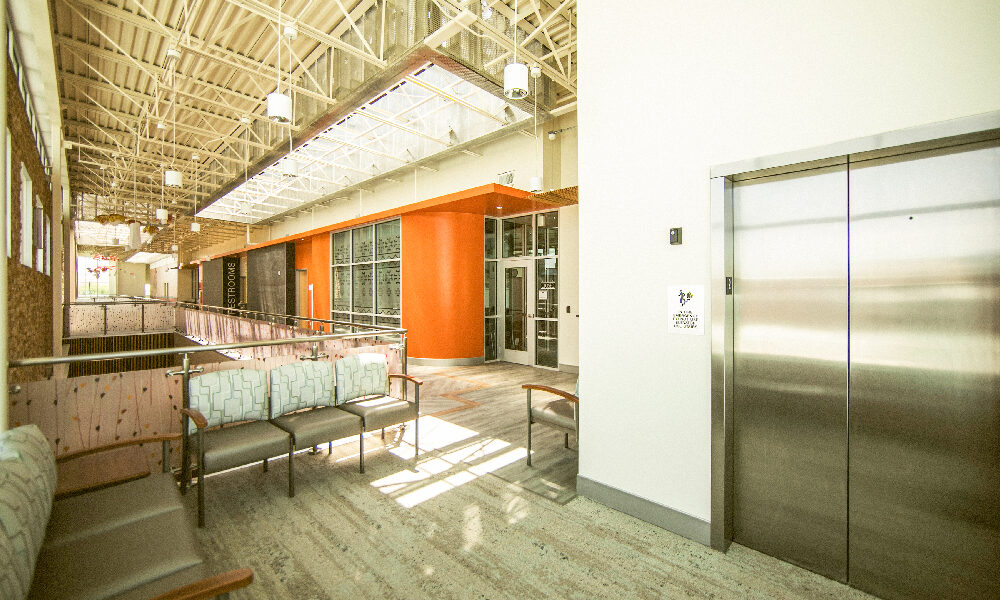 Montezuma Creek Community Health Center–Montezuma Creek, Utah. Many of the challenges facing construction projects in the healthcare industry are the same issues affecting the broader economy.
Montezuma Creek Community Health Center–Montezuma Creek, Utah. Many of the challenges facing construction projects in the healthcare industry are the same issues affecting the broader economy. 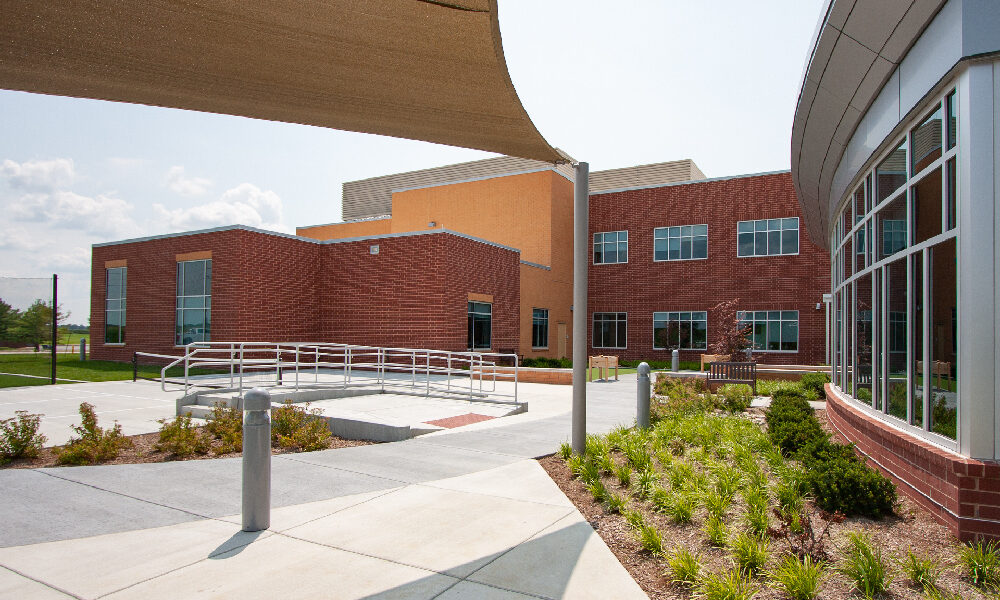 Kindred Healthcare Anderson Hospital–Rehabilitation Institute Hospital–Edwardsville, Illinois. Better planning is also a way to mitigate risk.
Kindred Healthcare Anderson Hospital–Rehabilitation Institute Hospital–Edwardsville, Illinois. Better planning is also a way to mitigate risk. 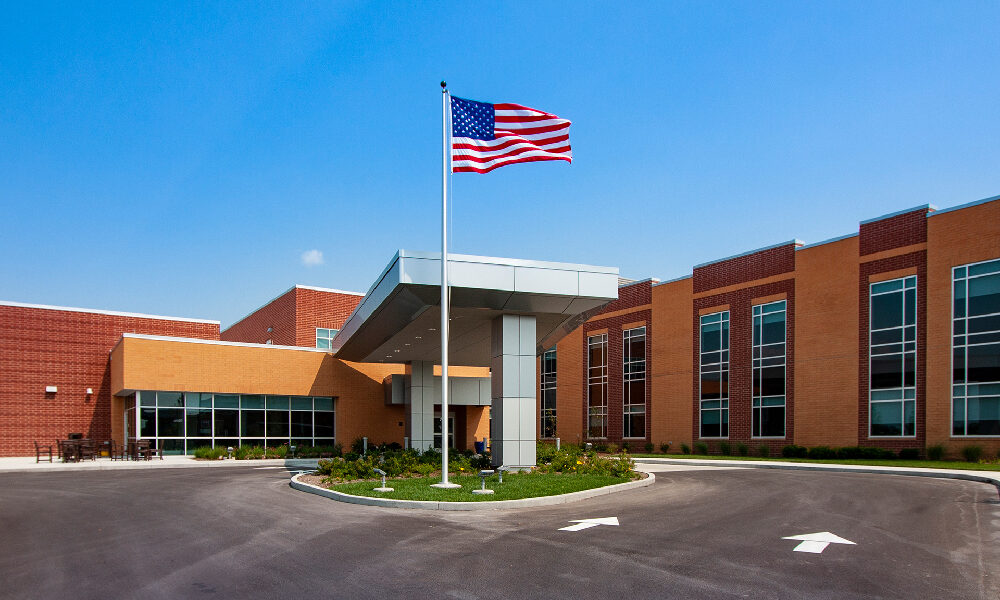 Kindred Healthcare Anderson Hospital–Rehabilitation Institute Hospital–Edwardsville, Illinois. The macro-economic situation right now is very volatile. The supply chain is broken and there is a record number of job openings, which means manufacturers are unable to keep up with the demand for construction materials.
Kindred Healthcare Anderson Hospital–Rehabilitation Institute Hospital–Edwardsville, Illinois. The macro-economic situation right now is very volatile. The supply chain is broken and there is a record number of job openings, which means manufacturers are unable to keep up with the demand for construction materials.  Anderson Ambulatory Surgery Center and Pediatric Clinic–Edwardsville, Illinois. Construction of largescale medical facilities is already challenging to plan and execute without a host of unforeseen problems.
Anderson Ambulatory Surgery Center and Pediatric Clinic–Edwardsville, Illinois. Construction of largescale medical facilities is already challenging to plan and execute without a host of unforeseen problems. 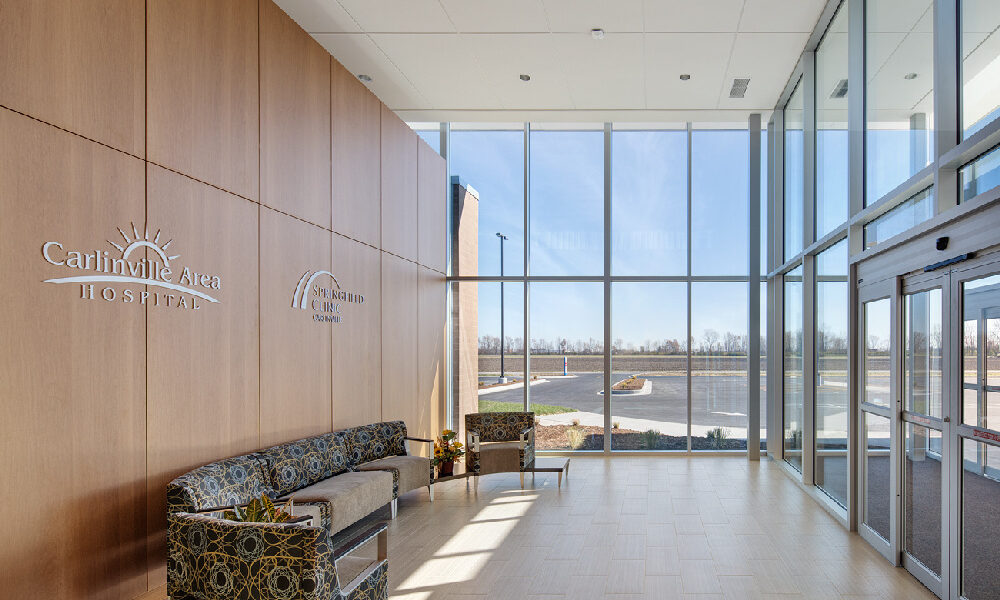 Carlinville Hospital Medical Office Building–Carlinville, Illinois. Schedules must be specific and fine-tuned to predict materials and activities down to a much more granular level.
Carlinville Hospital Medical Office Building–Carlinville, Illinois. Schedules must be specific and fine-tuned to predict materials and activities down to a much more granular level. 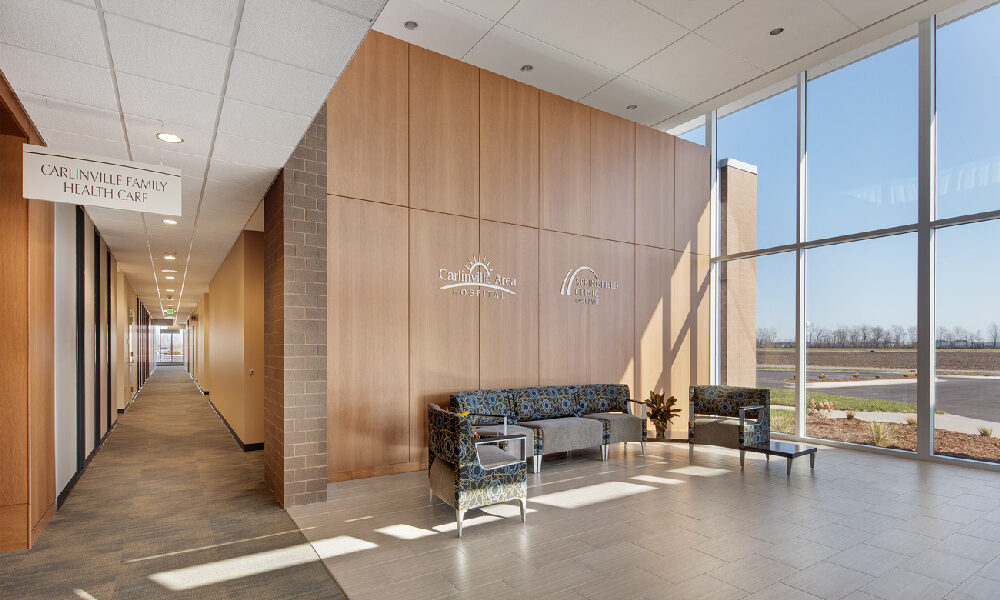 Carlinville Hospital Medical Office Building–Carlinville, Illinois. It’s important to find balance between adaptability and predictability wherever possible.
Carlinville Hospital Medical Office Building–Carlinville, Illinois. It’s important to find balance between adaptability and predictability wherever possible. Subscribe Now
Navigating Healthcare Construction Market Challenges
By Anthony Walker
Many of the challenges facing construction projects in the healthcare industry are the same issues affecting the broader economy: rising costs, labor shortages and supply chain disruptions. While these issues may seem insurmountable at times, there are some mitigation actions that can help design and construction teams push past them to deliver solutions that work for healthcare leaders and the communities served by their facilities. The key to solving the challenges of today is to be creative and responsive to whatever changes — in real time.
Macro-economic situation. The macro-economic situation right now is very volatile. The supply chain is broken and there is a record number of job openings, which means manufacturers are unable to keep up with the demand for construction materials. This has resulted in some fairly obscure challenges that never would have occurred in the past. For example, it is possible to make insulation for roofs, but impossible to get the plastic wrap used to safely ship it to a jobsite and actually install it. In another example, the team could have all the components required to make a switch gear for the building, but they can’t glue it together because they don’t have the raw materials to make the glue. A shortage of local truck drivers results in creative shipping workarounds that could add days to the schedule. Seemingly insignificant details like this that don’t have much impact on their own can become showstoppers when multiple problems occur at the subcomponent level that affect the entire project.
Answers to these problems are clear. Teams must endeavor to be granular in their understanding and analysis of all the components that go into a building, as well as the larger scope. In the past, the subcontractors worked more autonomously, but today, teams can resolve the volatility of the macro-economic conditions by monitoring the status of each piece of equipment/activity. Becoming granular means putting more effort into understanding what’s going on — most especially with cost, schedule and productivity.
Microtrends. Microtrends are also having a severe impact, not because they cause a big impact on their own, but mostly because there are so many different issues no one has seen before, and there’s no established plan for how to deal with them. Some of these micro problems are causing the macro issues. Construction of largescale medical facilities is already challenging to plan and execute without a host of unforeseen problems that even the most experienced leaders have no experience with.
Answers to the microtrends reflect solutions to macrotrends. New considerations that were never on any project stakeholder’s radar in the past are the very issues to watch and navigate. The best way to combat potential surprises is pre-planning and conversation, as well as risk analysis and mitigation. Market forces drive new trends, such as rising wages and labor shortages. Realistic productivity and staff expectations need to be factored into the project plan.
Budget, schedules + logistics. Budget is as much of a wild card as schedules and logistics. If a manufacturer runs out of a required material, is it possible to find it somewhere else? As supplies dwindle, prices skyrocket as cost becomes less of a deciding factor than availability. If one manufacturer of medical air compressors bids 5% lower than another, but can’t guarantee that they can meet the delivery date, the project has to choose between paying a higher price or the schedule skipping, which adds an unprecedented layer of risks to navigate.
Because everything is in flux — material warehouses can’t guarantee the price until the day the goods are delivered — nothing is locked in. Like the port of Los Angeles, jobsites are piling up material they aren’t ready to use in anticipation of shortages and rising prices in the future. It makes more financial sense to store material temporarily, than take the risk that it will be outrageously expensive or totally unavailable later. Nothing is unaffected by this crisis — even commodity-based items such as drywall and installation are becoming more expensive, and with fuel prices on the rise, transportation of goods and materials is increasingly a concern.
A key strategy to steer projects to success includes closely tracking what is needed and when to combat long lead times and shortages. In the past, greater availability of materials allowed for “just- in-time construction.” Now, much more intense scrutiny is required on fabrication schedules and lead times. If that is not manageable, stockpiling, protecting, insuring and controlling enough inventory to supply the project in advance may offer another answer.
And, a new alternative growing in popularity is modular/offsite construction. Modular construction has been on the cusp for a long time and this might be the ideal time to leverage its benefits. There is certainty when ordering a modular piece and just awaiting delivery, but the people constructing the module are still wrestling with the same piece-part tracking, so it may not necessarily be the ideal solution until the modular construction process is scrutinized.
Site stockpiling. While stockpiling doesn’t seem ideal, it is really the best way to combat many of the issues the industry is facing. Buying needed commodities ahead of time is the safest way to ensure scarcity doesn’t become a problem. The motivation for this is betting that prices will go up. If prices go down, there is excess inventory, which means wasted money, plus the cost of storage. Another way to handle this challenge is to ramp up the relationships with vendors: conduct honest, detailed conversations about what goods and materials are really needed and when, vs. the things that are “nice to haves.”
To optimize this strategy, there are important questions to ask upfront about stockpiling liabilities: How are warranties being managed? How is protection of the equipment/material being ensured? How is inventory control managed? What happens if the project is one piece short at the end or there is a surplus? In one example project, the subcontractor brought in an excess of foam for a building’s exterior. There was a sizeable surplus and questions about what to do with the remaining excess — who paid for it/who absorbs the cost? Can you resell it? How do you get it off the site and where does it go? There are all kinds of considerations — not just about the immediate needs but also project closure.
Planning. Better planning is also a way to mitigate risk. Schedules must be specific and fine-tuned to predict materials and activities down to a much more granular level. Getting ahead of reactionary problem solving and piecemeal delivery schedules will help project teams be prepared for whatever happens. This is the new normal and teams need to find a way to work in between the gray areas and adapt to changes as quickly as they come. This approach requires more time and effort added to the project upfront so all the details and potentialities can be accounted for, but it will be necessary to achieve success.
To guide projects to success, think about the higher lifecycle of the project and balance the “macro/micro topics.” Micromanaging is challenging and takes time, but this is a situation where a little extra planning/deeper conversation is highly beneficial. Get everybody involved in planning/scheduling as early as possible to cultivate partnerships and buy in. Once partnership is established, give project stakeholders latitude and empower them to make decisions because they understand their particular scope better than anyone. Collaboration and trust are essential in today’s environment — stakeholders and team members can’t work in silos, which can be a risk when project leaders unreasonably and rigidly define roles and responsibilities.
Labor shortage. The labor shortage is another challenge where the duration is unknown but it can probably go on for quite some time. At the moment, there is no clear solution since simply throwing money at the problem does not seem to be helping. Turnover is high and people are migrating from job to job. Taking the long view would mean encouraging young people to pursue careers in the trades, a choice that has been somewhat stigmatized over time in favor of careers that require a college education. If the labor force is evaporating, the solution may be simply to cultivate a replacement labor force to bolster the future of the industry.
All these issues are interconnected, of uncertain duration and need sustainable solutions. It is important to find balance between adaptability and predictability wherever possible. The public still needs quality healthcare, perhaps more than ever, and projects must go on, despite the challenges of resources and planning. It is critical to inspire people to do the work that needs to be done. The most critical solution: Stop operating in silos and start bringing everyone together. Engaging partners early and focusing on goals results in better outcomes. Hiding behind contracts, rigid processes and siloed thinking produces negative outcomes. This has always been the case, but differences that were marginal in the past are more profound in today’s environment. With the more collaborative approach, it’s much easier to discuss and make adjustments to improve outcomes. For years, the goal has been to make processes predictable and repeatable, like a manufacturing line. In today’s environment, stakeholders and team leaders need to be empowered to do what is ideal for each project, maximizing flexibility to adjust and adapt in real time.
Photos courtesy of The Korte Company
Author: Anthony Walker
Anthony Walker is healthcare executive with The Korte Company. He can be reached at anthony.walker@korteco.com or 618-654-8611.
Tags: Contruction
Posted September 12, 2022
More Articles:
- CxA Workshop & Exam
Apr 29, 2024 – Apr 30, 2024 - EMP Seminar & Exam at CxEnergy 2024
Apr 29, 2024 – Apr 30, 2024 - CxEnergy
Apr 29, 2024 – May 2, 2024 - PHCC West 2024
Apr 29, 2024 – May 2, 2024 - Lean in Design Forum 2024
May 1, 2024 – May 2, 2024 - IFMA’s Facility Fusion Conference & Expo
May 5, 2024 – May 7, 2024 - ASHE Academy 2024
May 6, 2024 – May 10, 2024










